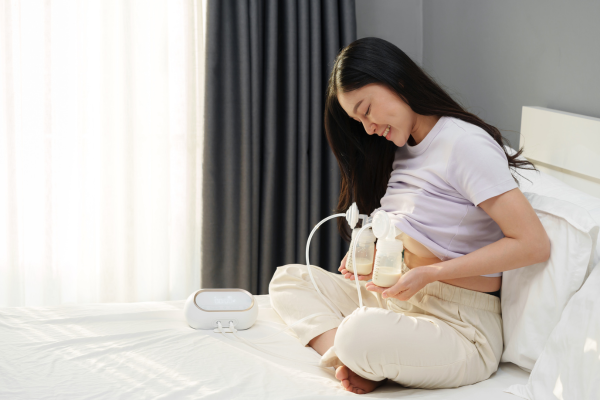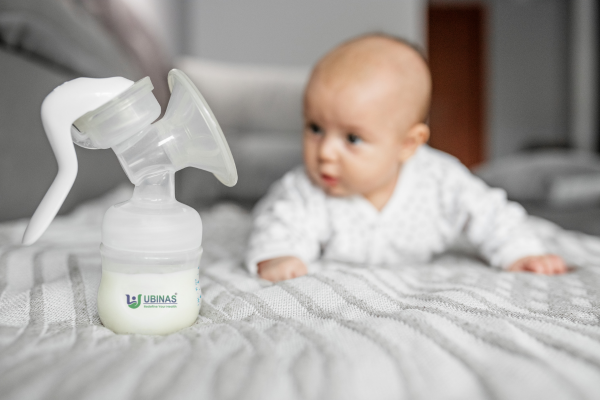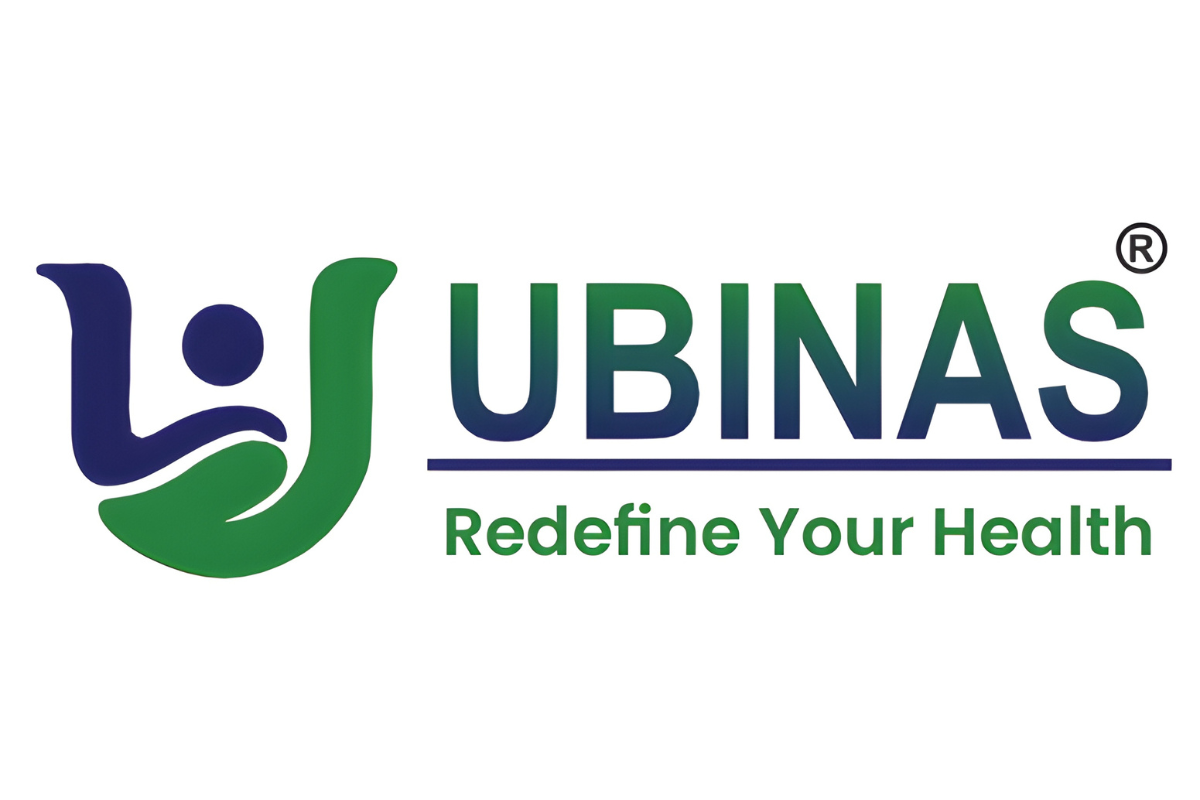How to Use a Ubinas Breast Pump

How to Use a Ubinas Breast Pump
Every new mother makes personal choices regarding breastfeeding and tries out different strategies to strike a balance. While the breastfeeding may be the primary option, there are many reasons why mothers would want to breast pump. It is advisable for working mothers, for those with insufficient milk supply, for partners sharing feeding duties, and for those who want to build a stash in the freezer.
In the following guide, we will include information on when to use a breast pump, different types of breast pumps, comfort tips, cleaning the breast pump, abrasiveness, and how Ubinas breast pumps simplifies life for mothers.
💡 What is a Breast Pump?
These devices help remove milk from a breast and the extracted milk can later be stored in a bottle for feeding the baby. They are particularly useful for mothers who:
- Have to return to working
- Want to increase the supply of milk
- Have babies who can’t latch onto the breast
- Aspire to allow a caregiver or partner to take part in feeding the baby
- Plan to donate breast milk
🕒 When Should You Use a Breast Pump?
No two mothers are identical, but they do share a few common circumstances like so:
🍼 1. Postpartum Pumping
Some mothers start pumping shortly after delivery, usually when:
– The baby is a preemie or hospitalized
– You’re trying to stimulate the production of milk
– Already dealing with some engorgement
🏠 2. Transitioning Back to Work
These mothers will often pump while out of the house to maintain the amount of milk kept in the fridge for scheduled feedings.
⏳ 3. For a Long Term Milk Stash
Many mothers tend to start pumping once daily a few weeks preceding going back to work or attending a long scheduled event.
🌃 4. For Night time Feeds
When you pump milk in the evening, your partner or caregiver can give a bottle during the night so you can rest.
🧺 Breast Pump Varieties
Pumps differ as Ubians has a variety of models to match different needs:
🔌 1. Electric Breast Pump
- Most useful and simple to use
- Ideal for frequent pumping (e.g., working moms)
- Single or double pump options available
- Compact and quieter, Ubinas electric pumps are easy to carry.
💨 2. Manual Breast Pump
- Best for infrequent usage
- Portability means no electrical outlet is needed
- Cost friendly
- Excellent as a backup or travel option

🛠️ How to Use a Breast Pump: Step-by-Step
Using a Ubinas electric breast pump is simple and we’ll go through it step by step. Various designs exist but the core process is generally the same.
🧼 Step 1: Wash Your Hands
Germs are removed by washing hands.
🧩 Step 2: Assemble the Pump
Refer to the manual to assemble the device. Put together the flange (breast shield), tubing, bottle and motor (for electric pumps). All assembled parts need to be clean and dry.
🪑 Step 3: Sit In The Preferred Position
Assume a comfortable posture. Some mothers prefer to recline to ease the pressure on the chest.
🤱 Step 4: Position The Flange
With the breast flange, your nipple should be at the mid-point of the breast flange while sitting over it. It needs to create a light seal as well. You may need another flange size if it is too painful or pinching.
🔘 Step 5: Start Pumping
Start up your machine for electric pumps. Most of them have a let down feature mimicking the light quick suckling of a baby during the early stages of breastfeeding.
After 2 minutes, switch to expression mode (a slower, deeper suction)
Pump each breast for 15-20 minutes or until the milk flow slows.
🍼 Step 6: Store the Milk
Milk should be transferred into a sterile bottle or milk storage bag. After marking the date and the time, it should be frozen or refrigerated when necessary.
🧽 Step 7: Clean All Parts
Separating the parts of the breast pump requires rinsing all components that came into contact with breast milk (flanges, valves, bottles) and washing them with warm, soapy water or doing sterilization. The items in question must remain completely dry in air between uses.
🎯 Tips for Successful Pumping
- Breast pumping requires looking at your baby’s photo, listening to calm music, or massaging the breasts which are critical to the process and serve as relaxation and visualization techniques.
- Having an adequate water intake boosts the chances of successful milk production.
- Always remember to pump: Adhere to a milking schedule especially when you are away from your baby.
- Use a double electric pump: Expressing milk from both breasts simultaneously saves time.
- Breast pumping bras: Enabling multitasking while pumping.
Benefits of Using A Breast Pump
They enable mothers to multitask with chores and breast feed enhancing productivity. That is why Ubinas breast pumps are loved.
- Flexibility and freedom
- Feeding through breast pumps allow mothers to take some time off without worrying if they will miss a feed.
- Increased milk supply
- Breast feeding mothers who pump milk for later use tend to have greater milk supply due to the constant stimulation of milk production when they pump.
- DNA in absence
- Breast milk is readily available when the mother is not available to the child while at work, on the go or even resting.
- Relief from mastitis
- When the baby can not immediately feed, pumping the milk ensures optimal removal to relieve discomfort and reduce the possibility of engorgement or mastitis.
- Partner empowerment
- Feeding enables other caregivers or partners to bond with the baby.
🔶 Disadvantages and Solutions: Overview
🔄 Decrease in Milk Production:
You can try not to get anxious because you can relax:
- Pumps are emptying more frequently.
- Sufficient fluids are being imbibed.
- Warm compresses are being applied.
- Gentle pre-pumping massages of the breast are done.
😓 Is Pain Accompanied With Pumping?
Adjust:
- Assembly of pump parts
- Flange measurement
- Levels of suction
🧊 Confusion with pumping milk:
Observe general guidelines enlisted below:
- Room Temperature- 4 hours
- Fridge- 4 days
- Freezer- 6 months
- Mark the date so you may use the oldest source first.
👶 Is it safe to utilize a breast pump for all mothers susoosedly?
Absolutely! When safe practices are employed, pumping is completely safe for the mother and her infant. Additionally, it is appropriate for:
Post-operative recovering mothers:
- Mothers with Pre-Term or NICU babies
- Full Time Employees
- Mothers with Twins or Multiples
- Mothers with low milk supply
Always contact a lactation consultant or doctor when in doubt or experiencing difficulties.
🏁 Conclusion: Us Ubinas Breast Pump
With breast pumping, you are in complete control over your feeding or expressing experience. This makes Ubinas the perfect aid for new mothers who are facing the new challenges of motherhood, or for veteran parents.
Our pumps are quiet, efficient, lightweight, and safe, suitable for real life challenges. You deserve tools that match your choices, preferences, and lifestyle, and with Ubinas, you’re guided every step of the way.
For any inquiries, or assistance with selecting a pump, please contact the Ubinas customer care team, or explore our range of breast pumps and accessories. Ubinas supports your every feed, one gentle, confident pump at a time.

